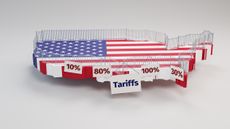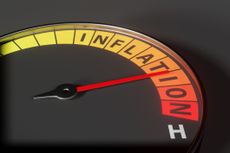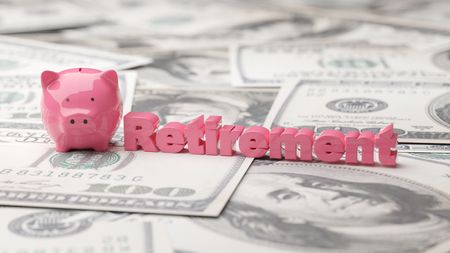What Rate of Return Can You Expect from Your Portfolio?
Your estimate can help you figure out what asset allocation best suits your risk tolerance and financial goals.

My last Kiplinger article introduced the latest book by Micahel J. Mauboussin, The Success Equation, in which he makes the argument that events in business, sports, investing and even life can be looked at as part skill and part luck. The trick is to figure out whether skill or luck has a larger impact in any particular activity.
The part of the book that interests me the most is the discussion of investing, and how it is an endeavor that involves a high degree of luck. So much so, in fact, that the influence of events outside of our control (luck) can overshadow skill, good processes and past strings of either good or bad results.
In such a situation, the author recommends following checklists and ensuring that a solid, repeatable process is followed. Before we can even begin to consider evaluating investments for implementation, we have to establish our goals.

Sign up for Kiplinger’s Free E-Newsletters
Profit and prosper with the best of expert advice on investing, taxes, retirement, personal finance and more - straight to your e-mail.
Profit and prosper with the best of expert advice - straight to your e-mail.
How do we do that? I propose the following procedure:
1. Determine the appropriate allocation (or diversification strategy) for your portfolio. My firm does this by evaluating a client's sensitivity to volatility (risk tolerance), using a state of the art tool called Riskalyze.
2. After getting a feel for your risk tolerance, consider other aspects of your life, such as career stability, stage of life (growth years, retirement, distribution, etc.), financial situation in terms of emergency funds, savings, debt, need to pay for education, etc. Then, make a determination about what your expected return needs to be. Should it be 6%, 8%, 11%?
3. A rate of return can be backfitted into your portfolio by using the latest estimates of what different asset classes have returned over a period of time, as well as inflation expectations and other factors.
To give you an idea of how subjective this is, and how a qualified fiduciary adviser can earn his or her keep, here's an excerpt from Dimensional Fund Advisors latest "Matrix Book," an invaluable resource for making informed decisions of this type:

As a back-of-the envelope estimate, let's go with the most recent 20 years and the following basic asset classes:
U.S. Stocks – S&P 500: 8.2%
International – MSCI EAFE: 4.4%
U.S. Small Cap – Dimensional US Small Cap Index: 11.5%
Bonds – Barclays US Aggregate Bond Index: 5.3%
Your expected return is going to equal the sum of the returns of each of the above benchmarks multiplied by its expected weight in your portfolio. For example, let's say your risk tolerance score recommends you build a balanced portfolio of 60% stocks and 40% bonds. Also, let's say that you've decided that 10% of the portfolio should be in small company stocks and 10% in international. Your expected overall return should be: 8.2% x 0.4 + 4.4% x 0.1 + 11.5% x 0.1 + 5.3% x 0.4 = 6.99%. That's before inflation, money management fees, etc.
Now we have a decision point. Is 6.99% appropriate for you? Or do you need more of a return? A case can be made that if you are in the growth stage of your career and income, the entire portfolio should be weighted toward large and small domestic stocks, which should significantly impact your returns (and also the volatility of the portfolio). Realize too, that there are many other asset classes we can consider&mdsah;emerging market stocks, different classifications such as growth, value, or blend, mid-cap stocks, commodities, real estate, "smart beta", etc. These may add incremental returns to our portfolio, depending on the type of asset.
If you're happy with the return expectations using only indexes and benchmarks to guide you, a passive indexing approach may suit your needs just fine. You will minimize one component of portfolio drag—expenses, as most index funds and exchange-traded funds will have overall expense ratios of 0.5% or less.
Whatever your needs, this process can help you make better decisions when choosing mutual funds and ETFs. You can even crunch your own numbers, using the Portfolio Expected Returns Calculator I've created.
Doug Kinsey is a partner in Artifex Financial Group, a fee-only financial planning and investment management firm based in Dayton, Ohio.
Get Kiplinger Today newsletter — free
Profit and prosper with the best of Kiplinger's advice on investing, taxes, retirement, personal finance and much more. Delivered daily. Enter your email in the box and click Sign Me Up.

Doug Kinsey is a partner in Artifex Financial Group, a fee-only financial planning and investment management firm in Dayton, Ohio. Doug has over 25 years experience in financial services, and has been a CFP® certificant since 1999. Additionally, he holds the Accredited Investment Fiduciary (AIF®) certification as well as Certified Investment Management Analyst. He received his undergraduate degree from The Ohio State University and his Master's in Management from Harvard University.
-
 Trump's Sweeping New Tariffs Rattle Wall Street, Main Street
Trump's Sweeping New Tariffs Rattle Wall Street, Main StreetThe Kiplinger Letter Trump is promising that the short-term pain of steep new tariffs on imports will spark a manufacturing renaissance. But they pose major risks in the near term.
By Jim Patterson Published
-
 Why Does the Fed Prefer PCE Over CPI?
Why Does the Fed Prefer PCE Over CPI?Inflation has been top of mind for lots of folks in recent years. Most of Wall Street follows the CPI but the Fed favors the PCE. Here's why.
By Charles Lewis Sizemore, CFA Published
-
 How to Age-Proof Your Retirement Plan
How to Age-Proof Your Retirement PlanLongevity risk is a big threat to your retirement, but there are several strategies to protect yourself from running out of money, no matter how long you live.
By Nico Pesci Published
-
 Retirement Planning for Couples With a Generation Gap
Retirement Planning for Couples With a Generation GapDo you and your partner have different retirement timelines and attitudes to saving? It is possible to make plans together. This is how one couple did it.
By Phil Wright, Certified Fund Specialist Published
-
 How to Replace a Corporate Trustee (and Make Other Trust Changes)
How to Replace a Corporate Trustee (and Make Other Trust Changes)The right choice of trustee today may not be the right choice for trust beneficiaries in the future. Here's what you should know.
By Christopher F. Tate, J.D. Published
-
 How Building Liquidity Into Your Retirement Plan Can Pay Off
How Building Liquidity Into Your Retirement Plan Can Pay OffTo succeed in investing for retirement, you need time and discipline — liquidity can give you both.
By Samantha Compton, IAR Published
-
 Striking Oil in Opportunity Zones: Now Might Be the Best Time to Invest
Striking Oil in Opportunity Zones: Now Might Be the Best Time to InvestYou could unlock hidden wealth in QOZs with strategic oil and gas investments, potentially combining tax advantages with long-term growth in an essential industry.
By Daniel Goodwin Published
-
 What You Don't Know About Annuities Can Hurt You
What You Don't Know About Annuities Can Hurt YouLack of awareness leads many to overlook these potent financial tools, and with the possibility of running out of money in retirement, that could really hurt.
By Ken Nuss Published
-
 Three Keys to Logical Investing When Markets Are Volatile
Three Keys to Logical Investing When Markets Are VolatileFocusing on these market fundamentals can help investors stay grounded rather than being swayed by emotion or market hysteria.
By Dennis D. Coughlin, CFP, AIF Published
-
 Winning Strategies for Financial Advisers as Clients' Lives Evolve
Winning Strategies for Financial Advisers as Clients' Lives EvolveHow can the wealth management industry help make life transitions easier for the adviser and the client?
By David Conti, CPRC Published